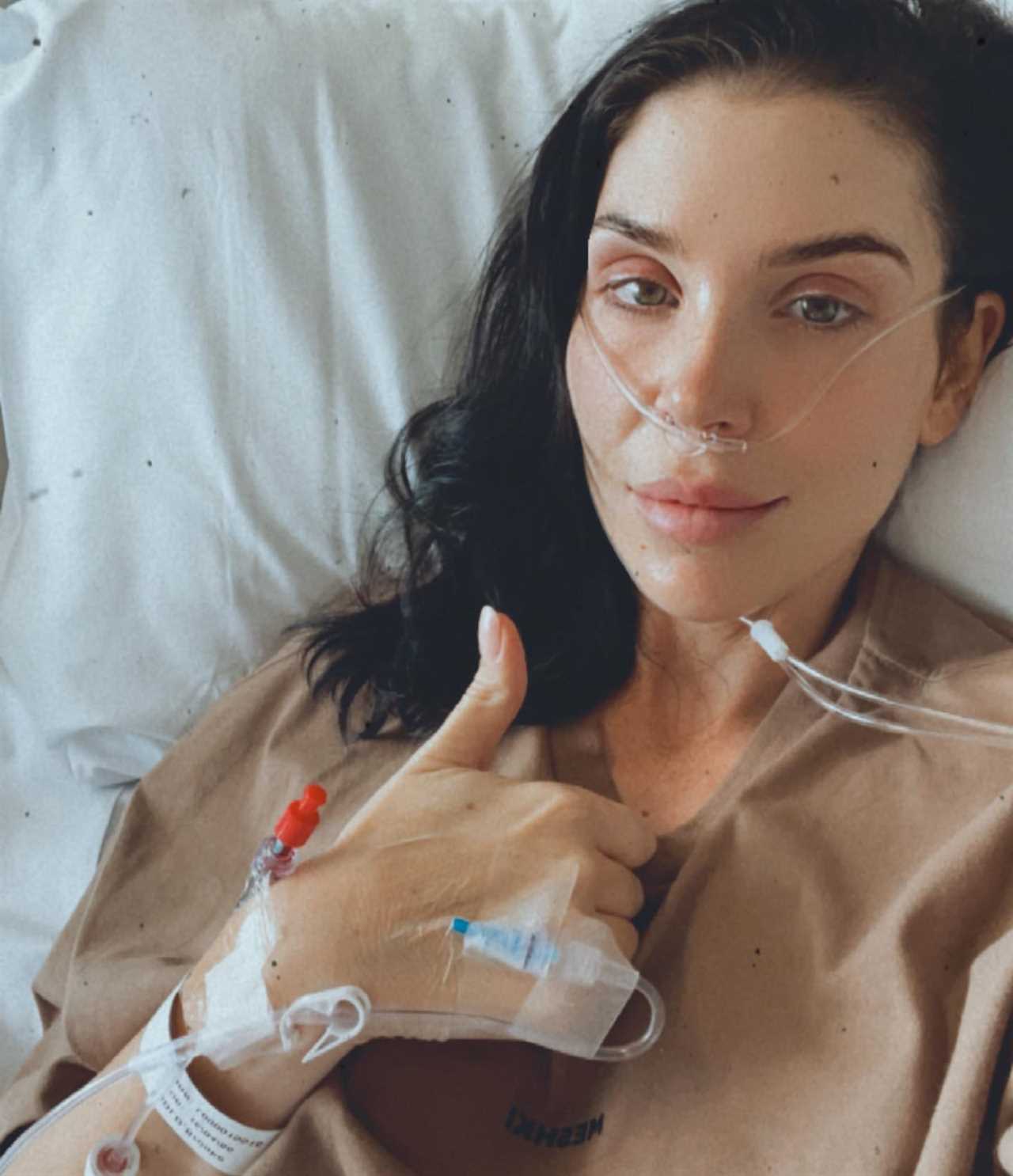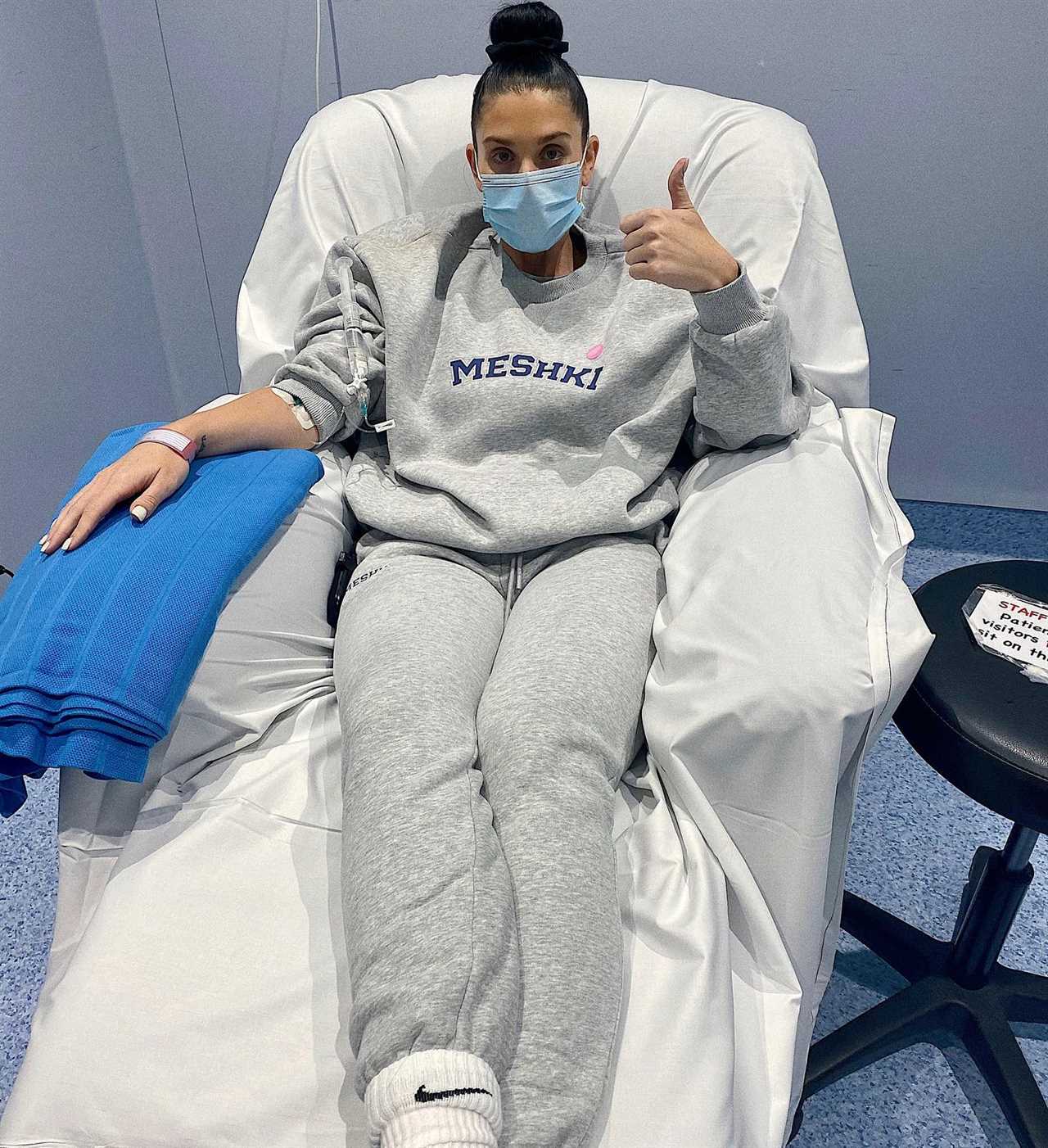A YOUNG mum had her life turned on its head after a shocking cancer diagnosis left her with lifechanging complications.
Brooke Gold, 36, had always been vigilant when it came to getting pap smears – until a few delayed check-ups left her fighting for her life.

Brooke’s life was turned upside down when a shock cervical cancer diagnoses.

The young mum only decided to go and get seen when she started to experience spotting between her periods

Brooke has always maintained a fit and healthy lifestyle, eats well and goes to the gym often.
The mum-of-one had put off some smears over the past five years due to a busy lifestyle and a fear of the result due to a family history of cancer.
She only decided to go and get seen when she started to experience spotting between her periods.
Tragically, the delayed smear revealed she had a four centimetre growth on her cervix and was was diagnosed with stage four cervical cancer in November 2020.
If she had pushed back her check-up just one more month, doctors said she’d most likely be dead.
Brooke said that doctors had attempted surgery to save her fertility but couldn’t proceed because the cancer had already spread to her lymph nodes.
This means that the cancer had spread from her cervix to other areas of her body.
Since, the young HR manager has been on an “emotional and physical rollercoaster” during treatment.
Despite now being cancer free, the mum said she “struggles everyday” with issues related to her cancer.
Brooke was left with awful side effects including a “hole” in her bladder from radiotherapy.
“My family and I were told they were not sure if they could save my life at this point as it was advanced.
“They removed some lymph nodes and stitched me back up,” Brooke told FEMAIL in an exclusive interview.
The mum remained in hospital for a few weeks then started chemotherapy and radiation.
She then had three weeks of internal radiation – which damaged her ovaries.
Having the radiation also meant to lost her fertility and was left with “severe radiation damage”, including constant pelvic pain, discomfort and menopause.
“If I had of gone sooner for my pap smear, or if doctors told me when I was having symptoms that I needed a pap smear, I could have avoided cancer and losing my fertility,” Brooke said.
“I have a lot of radiation damage aside from just my ovaries ‘dying’ – I have severe burns inside my pelvis and a hole in my bladder from radiation.
“Everywhere I turn, my friends are having babies and Jones [her husband] and I now need a surrogate to have ours,” she said.
“I’ve needed to have six weeks of hyperbaric oxygen everyday to see if that helps the dead tissue heal and whilst this helped some of the inflammation, it did not close the hole or fix the damage.”
As for the surrogacy process itself, the couple only have two embryos from the IVF which were removed before Brooke’s initial surgery.
“I feel sad about it (surrogacy) but happy we have this kind of technology and option available,” she said.
“It costs over $200,000 USD (close to £184 520 GBP) so it’s not cheap and the process is very very complex.”
The huge bill includes the surrogacy agency fee to pay the surrogate and for all associated costs with IVF process.
In the UK, you cannot pay a surrogate – except for their reasonable expenses, such as healthcare.
The young mum is also dealing with early menopause – another result of the damaging radiation.
“Doctors said I “had the most amount of radiation humanly possible without it killing someone”, Brooke claims.
Now doctors have told Brooke she is ‘cured of cancer’ but requires full body scans every three months for the next five years to make sure there is no recurrence.
But just because treatment has finished doesn’t mean the battle is over.
“They don’t tell you that when cancer treatments finish, it isn’t the end of the fight and in some ways,” she said.
“The last 12 months since treatment finished has been just as hard, if not harder than the treatment itself.
“I feel like I am only just now processing the fact I had cancer and almost died.
“One more month and maybe they wouldn’t have been able to save my life,” she added.
Now Brooke is making it her mission to combat the cancer and raise awareness on social media.
She has always maintained a fit and healthy lifestyle, eats well and goes to the gym often.
She is forever grateful for her family and Jones for supporting her during the entire ordeal.
What is cervical cancer?
Cervical cancer is defined as when the disease starts in the neck of the womb, otherwise known as the cervix.
Between 2016-2018 there were 3,197 new cases – and 854 deaths, which means its the most common form of the disease in women under 35.
Generally, it’s caused by persistent infections with the human papillomavirus (HPV), which is contracted through sex.
Thankfully, most young women in the UK are now immunised against it, although boys aren’t.
Two strains of the HPV virus (HPV 16 and HPV 18) are known to be responsible for most cases, but most women who have them don’t develop cervical cancer.
How can I screen for cervical cancer?
Cervical screenings, or smear tests, are a preventative swab used to detect abnormal cells on the cervix – the entrance to the womb from the vagina.
Detecting these cells and then removing them can prevent cervical cancer. It’s not a test for cervical cancer itself.
Most women’s results show everything is totally normal – the test picks up abnormalities in around one in 20 women.
Cervical screening is carried out under the NHS Cervical Screening Programme, which was introduced in the 1980s.
Every woman over the age of 25 who has a GP is invited for screening – and it doesn’t matter if you’re sexually active or not.
It is possible for women of all ages to develop cervical cancer, but it’s extremely rare in women under 25.
If a sample tests positive for high-risk HPV, cells will then be analysed for abnormalities.
If abnormalities are detected, a woman will be referred for a colposcopy for further analysis.
For more information, visit Jo’s Cervical Cancer Trust.
If diagnosed, how is the disease treated?
The type of treatment depends on the stage and severity of each case, but there are several ways to treat cervical cancer.
Often, it’s possible to have surgery without undergoing a hysterectomy (the removal of the womb) although this is a rather routine procedure.
Alternatively, radiotherapy is a common option for those with early stages of the disease.
Meanwhile, those with more serious cases may need both surgery and radiotherapy, plus additional chemotherapy.
What are the odds of overcoming cervical cancer?
Fortunately, the condition is almost completely preventable and can be forecast with regular smear tests.
And, even if you – or a loved one – is diagnosed, it has an average survival rate of 51 per cent, according to a the stats from 2013-2017 in England.
For women who have stage 1 of the disease, survival for more than five years can be 99 per cent.
For stage 2, that becomes 60-90 per cent, while stage 3 is 30-50 per cent.
Those with stage 4 cervical cancer have a one-in-five chance of combating the illness and living more than half a decade.

Brooke was left her with a hole in her bladder, infertile and thrown into early menopause






